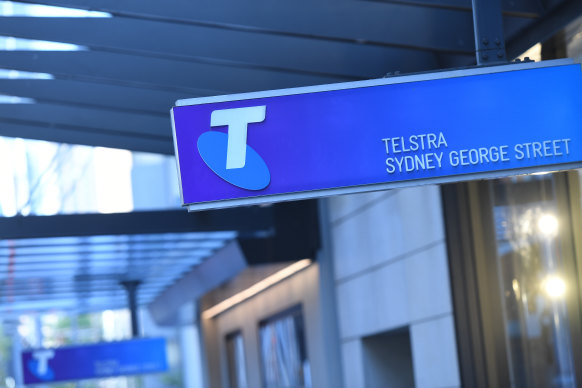- Business
- Consumer affairs
- Money apps
This was published 7 months ago
The rewards ruse that’s catching Telstra customers off guard
Hi Nicole,
I saw your recent column on being hacked on Instagram. My 74-year- old mum was just scammed and Westpac has failed to take responsibility for it.
My mum received a text message that her Telstra points were about to expire. Having a Telstra account with points accruing, this appeared legitimate, and she clicked through to the “Telstra shop” to select from a number of gift cards to use up her points.
She chose a $200 Apple gift card and was asked to input her credit card to pay a 99 cents charge to Telstra. There were quickly two charges for over $990 each on her card, for a company called AliExpress.
Westpac has advised that because this is a scam they can’t dispute the transaction, and they can’t call it fraud because she “participated” in the scam by providing her credit card number. She objected to this saying that she did not approve the transactions; Westpac insists she did because she entered the code they sent her and that the vendor she was dealing with “lied to her” about the amount.
I find this an extraordinary abdication of responsibility that Westpac had received information about the vendor and the amount of a transaction and has not provided that information to my mum attached to the authorisation-to-pay code. How do the banks get away with this?
My mum is out of pocket $1,987.85.
Sarah
Oh Sarah, this is incredibly distressing for your mum, Amanda, and for you. For other readers, Amanda was caught out not once but twice in a matter of minutes as that the fraudsters put two almost $1000 transactions through.
When Amanda received the second authorisation code from Westpac, she entered this one too. And that’s logical right? We are all used to codes expiring – or mistyping them – and being re-issued.

Telstra says it blocks millions of threats across SMS, email and phone calls every month.Credit: AAP
But it exposes a huge vulnerability in our anti-scammer security systems. That the specific transaction amount a code would approve is missing, is another hole in the protection for consumers. This information alone would usually alert us to something untoward.
Now, to be fair, Westpac swiftly messaged asking if Amanda had authorised a charge of $997.33, but she had unfortunately already entered both codes.
She responded “No” but a block on her card came too late. An hour or so later, someone from the fraud team also called her and took details, saying he would look into it. And that’s where the situation stalled.
A chargeback is now the only way. Your mum has clearly not received what she had “purchased”: the Apple gift card. Well, after my inquiry, Westpac escalated Amanda’s case and assures me that’s exactly what will happen – all charges will now be reimbursed.
A Westpac spokesperson told me: “When a customer transfers or sends their money to a scammer, we work hard to recover the money where possible. If we’re unable to recover the funds, reimbursement is considered on a case-by-case basis with a range of factors taken into account.” So credit to the bank for that.
It also said: “Stopping scams is one of our highest priorities, and we are investing significantly in scam prevention and detection measures.”
But scams are a story we hear far too often now – both the failure to stop them and their increasingly insidious, cynical design.
In a government crackdown announced on Friday, banks and social media companies could soon be fined up to $50 million for failing to protect customers. And telecommunication companies will also be held accountable, in a departure from the pure-bank-blame approach taken by countries like the UK.
As for this latest Telstra one, your mum’s case serves as a timely warning, the rewards ruse will ‘ring’ true for many Australians as the company has so many customers.
Telstra has previously warned customers about loyalty points and rewards-based SMS scams. It also says it “isn’t uncommon that scammers contact our customers pretending to be from Telstra” and “we block millions of threats across SMS, email and phone calls every month”.
Yes, millions.
So, to safely check your Telstra Plus points, download the My Telstra App. And to help stay safe from scams, never click on SMS or email links in unsolicited messages and don’t feel pressured to share personal information.
Instead, contact the organisation on the official number listed on a website or the phone number in your contacts list … if the person is claiming to be a family member or friend.
Meanwhile, Sarah, please let me know if your mum doesn’t receive her rightful refund.
Nicole Pedersen-McKinnon is the author of How to Get Mortgage-Free Like Me, available at www.nicolessmartmoney.com. Follow Nicole on Facebook, X and Instagram.
Advice given in this article is general in nature and is not intended to influence readers’ decisions about investing or financial products. They should always seek their own professional advice that takes into account their own personal circumstances before making any financial decisions.
Expert tips on how to save, invest and make the most of your money delivered to your inbox every Sunday. Sign up for our Real Money newsletter.